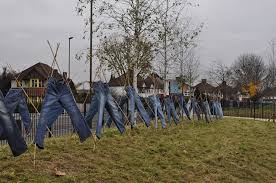In the future, gold rushes could occur in sewage plants. Precious metals have been found in large quantity by researchers investigating waste and the passage of nanoparticles (gold, silver, platinum, etc.) into our water. From a Jan. 29, 2015 news article by Adele Peters for Fast Company (Note: Links have been removed),
One unlikely potential source of gold, silver, platinum, and other metals: Sewage sludge. A new study estimates that in a city of a million people, $13 million of metals could be collecting in sewage every year, or $280 per ton of sludge. There’s gold (and silver, copper, and platinum) in them thar poop.
…
Funded in part by a grant for “nano-prospecting,” the researchers looked at a huge sample of sewage from cities across the U.S., and then studied several specific waste treatment plants. “Initially we thought gold was at just one or two hotspots, but we find it even in smaller wastewater treatment plants,” says Paul Westerhoff, an engineering professor at Arizona State University, who led the new study.
Some of the metals likely come from a variety of sources—we may ingest tiny particles of silver, for example, when we eat with silverware or when we drink water from pipes that have silver alloys. Medical diagnostic tools often use gold or silver. …
The metallic particles Peters is describing are nanoparticles some of which are naturally occurring as she notes but, increasingly, we are dealing with engineered nanoparticles making their way into the environment.
Engineered or naturally occurring, a shocking quantity of these metallic nanoparticles can be found in our sewage. For example, a waste treatment centre in Japan recorded 1,890 grammes of gold per tonne of ash from incinerated sludge as compared to the 20 – 40 grammes of gold per tonne of ore recovered from one of the world’s top producing gold mines (Miho Yoshikawa’s Jan. 30, 2009 article for Reuters).
While finding it is one thing, extracting it is going to be something else as Paul Westerhoff notes in Peters’ article. For the curious, here’s a link to and a citation for the research paper,
Characterization, Recovery Opportunities, and Valuation of Metals in Municipal Sludges from U.S. Wastewater Treatment Plants Nationwide by Paul Westerhoff, Sungyun Lee, Yu Yang, Gwyneth W. Gordon, Kiril Hristovski, Rolf U. Halden, and Pierre Herckes. Environ. Sci. Technol., Article ASAP DOI: 10.1021/es505329q Publication Date (Web): January 12, 2015
Copyright © 2015 American Chemical Society
This paper is behind a paywall.
On a completely other topic, this is the first time I’ve noticed this type of note prepended to an abstract,
Note
This article published January 26, 2015 with errors throughout the text. The corrected version published January 27, 2015.
Getting back to the topic at hand, I checked into nano-prospecting and found this Sept. 19, 2013 Arizona State University news release describing the project launch,
Growing use of nanomaterials in manufactured products is heightening concerns about their potential environmental impact – particularly in water resources.
Tiny amounts of materials such as silver, titanium, silica and platinum are being used in fabrics, clothing, shampoos, toothpastes, tennis racquets and even food products to provide antibacterial protection, self-cleaning capability, food texture and other benefits.
Nanomaterials are also put into industrial polishing agents and catalysts, and are released into the environment when used.
As more of these products are used and disposed of, increasing amounts of the nanomaterials are accumulating in soils, waterways and water-systems facilities. That’s prompting efforts to devise more effective ways of monitoring the movement of the materials and assessing their potential threat to environmental safety and human health.
Three Arizona State University faculty members will lead a research project to help improve methods of gathering accurate information about the fate of the materials and predicting when, where and how they may pose a hazard.
Their “nanoprospecting” endeavor is supported by a recently awarded $300,000 grant from the National Science Foundation.
You can find out more about Paul Westerhoff and his work here.
